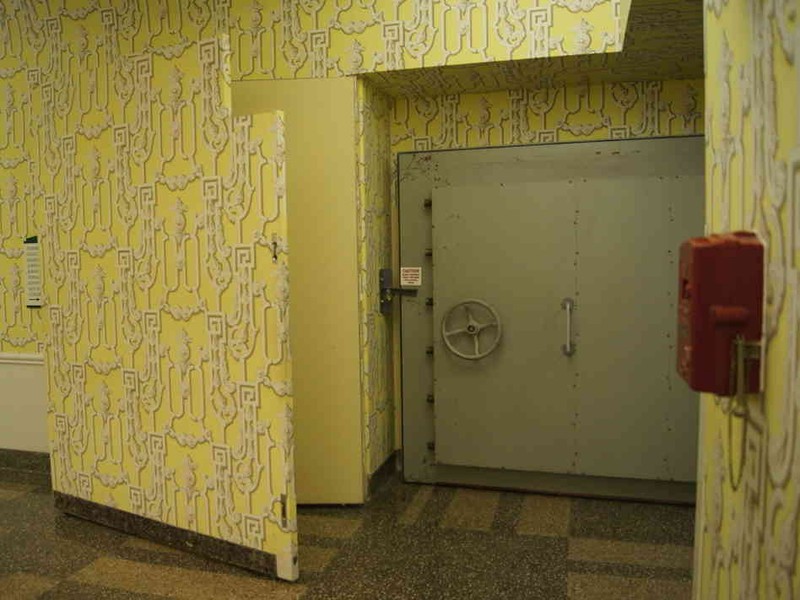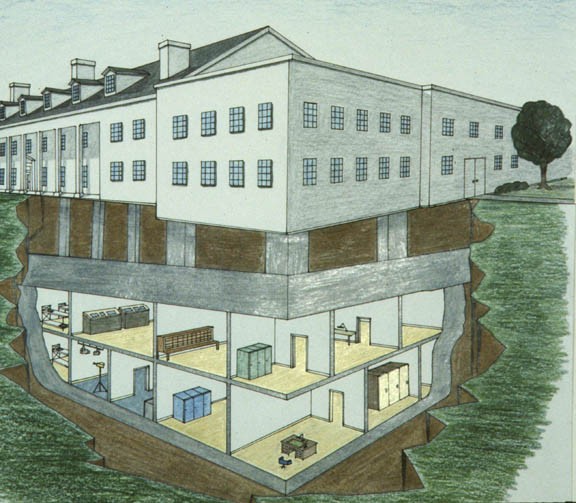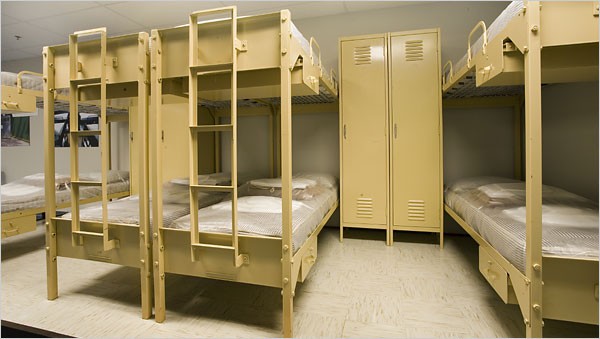The Greenbrier Bunker
Introduction
Text-to-speech Audio
In light of the Cold War and fearful of a nuclear apocalypse, Congress moved to build an extensive bunker where they could be protected from such events. The construction of “hiding in plain sight”, as the bunker came to be called, began in December 1958; however, to avoid suspicion, the Greenbrier Resort built a new addition called the West Virginia Wing. The bunker covers approximately 112,000 square feet. (http://www.greenbrier.com/Activities/The-Bunker/Hidden-in-Plain-Sight-Goldenseal-Magazine-2010.aspx). The walls are made out of two feet thick concrete, which are reinforce with steel. There were four different blast doors, and the largest of them measures fifteen feet in height, twelve feet in width, and nineteen and a half inches thick, which weighs 28 tons. (http://www.greenbrier.com/Activities/The-Bunker/Hidden-in-Plain-Sight-Goldenseal-Magazine-2010.aspx). It cost $14 million dollars to construct the new addition to the Greenbrier and the bunker.
The bunker was built to hold the people from Congress. Numerous rooms were built to accommodate Congress for a living and work area. The bunker contained conference rooms, clinics, media equipment, two auditoriums for the House and Senate, and many more of the like. The bunker held three large tanks that held up to 25,000 pounds of fresh water, an incinerator, and large shower rooms.
This best kept secret stayed a secret until 1992, when the Washington Post uncovered the secret bunker. On June 1, 1992, Congress announced that they no longer support the Greenbrier bunker. Government official disentangled the government relationship with the Greenbrier and ordered for the equipment in the bunker to be removed. Today, the bunker is still evidence of the fear of a nuclear apocalypse.
The Greenbrier Bunker, hidden within West Virginia, was not exposed until, May 31, 1992, when the Washington Post published an article exposing the facility. As a result, the U.S. government began de-commissioning The Bunker and ended the lease agreement with The Greenbrier in 1995. So how was it kept secret that long? Well, construction began in 1958 on this 544-square-foot bunker, which was built 720 feet into the hillside under The Greenbrier's West Virginia Wing. A 25-ton blast door led to the 18 dormitories that could accommodate 1,100 people, several decontamination chambers, a cafeteria, a pharmacy, a clinic with 12 hospital beds, meeting rooms for the House and Senate, a power plant with purification equipment, three 25,000-gallon water storage tanks, three 14,000-gallon diesel fuel storage tanks and a communications area that included a TV production studio and audio-recording booths. Though this was never used, if had been the congressmen and their families would have been told they were going on a "vacation" if they had to enter the bunker. So, it would have even been a secret to them.
Though the construction workers had their suspicion, they were even unaware of what they were actually building. It was constructed to house all 535 members of Congress in during a nuclear incident. This location was chosen because of its distance away from D.C. If anything were to happen at the capital it was far enough away to where radiation would not have any affect, and close enough to get there quickly. If the radiation detector our front sensed any radiation, it would send a silent alarm, and its 25-ton blast door would seal. The bunker had four of this large blast doors, some of which connect to the resort. To keep them hidden they used bright wallpaper with a very strange pattern where someone would not stare to long, and one wouldn't notice a very slight crack.
Once complete in 1961, hotel kept the bunker stocked with supplies and food for 30 years. Food trucks would come in the dead of night, they were told they were just delivering food for the hotel, back their trucks up into the first section of the bunker to unload their food, this was as much as they saw of the bunker. The others that worked and maintained the bunker were told to blend in with the community, participate in many town activities, so no one would suspect anything. The president only visited once, anything more would lead to suspicion.
The closest the bunker ever came to being used was in 1962 during the Cuban Missile Crisis. Much of the bunker is now a private data storage facility, and some congress meeting, but a section is open to visitors by guided tour.
Images



Sources
http://content.time.com/time/photogallery/0,29307,1886881_1860361,00.html
http://www.slate.com/blogs/atlas_obscura/2013/08/16/behind_a_false_wall_at_west_Virginia_s_ritzy_greenbrier_resort_is_a_cold.html
http://www.avhub.net/congressionalhideawaygreenbriar.htm
